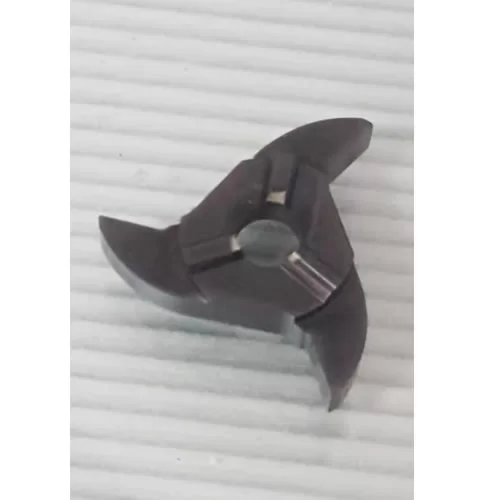Twin Tooth thread Blades
The latest development of threaded cutting technology is a blade with a special geometrical shape (two teeth with different contours). This combination allows the number of strokes to form a complete thread to be reduced by as much as 40% compared to a single tooth tool, while also increasing the tool life.
Although technically it is a multiple-toothed blade, but the high snap Tap TT (twin-toothed blade) overcomes a problem associated with a traditional multi-toothed tool, that is, a vibration caused by a large cutting force. Compared with the traditional blade, the cutting edge of TT Blade has a shorter meshing length, which reduces the cutting force and reduces the risk of flutter. And because of the short spacing (t size) of the tooth shape to the edge of the TT blade, the thread can be machined closer to the step.
Another advantage is that the TT blades are milled in standard 16 blanks, and other toothed blades require larger, higher-priced blanks. The key to cutting efficiency of TT blades is an "roughing tooth/Finish tooth shape" design, in which roughing teeth are obviously shorter than finishing. Therefore, the lead thread is much less depth than the second thread.
In any case, these teeth are in some way symmetrical to the contour of the machined tooth profile. The contour of the first tooth of the Cheijin workpiece shows a more perpendicular leading edge than the second tooth of the finished thread finishing contour. The TT Blade completes two different cuts instead of completing two similar cuts at different depths. Each tooth is optimized for efficiency, and in fact each tooth cooperates with each other to produce a complete tooth shape as soon as possible.
In addition, each tooth is removed almost identical to the material mentioned to maintain the force balance passed to the knife pad. This is not to say that the new cutting edge shape as long as a stroke can be processed a complete thread, it only cut off a small part of the volume is roughly equal, the blade through a few strokes to complete the radial feed.

















